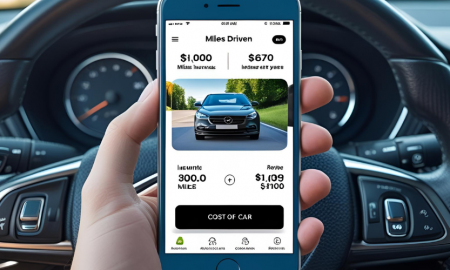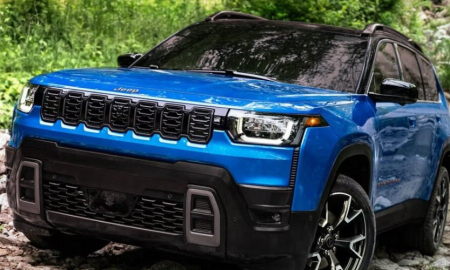
Things To Know About Pay-As-You-Drive Motor Insurance

The car insurance industry keeps evolving to serve its customers. The move from paper-based insurance to a digital platform is a prime example of this evolution. The regulating body and the insurers work towards serving potential and existing policyholders’ needs and making their insurance experience satisfactory. The Pay As You Drive Car Insurance Policy is a recent example directed toward offering a customized car insurance policy.
A pay-as-you-drive motor cover is an assorted comprehensive insurance policy that charges the premiums based on the usage of your vehicle. The policy has two components: third-party cover and own-damage cover. Such policies are already prevalent in developed nations worldwide and are gaining momentum in India.

Pixabay/ Pexels | A pay-as-you-drive motor cover is an assorted comprehensive insurance policy that charges the premiums based on the usage of your vehicle
Third-party Insurance:
In India, insuring a vehicle is important. It is a legal requirement, and you can be penalized for not following the rules. Therefore, you must make sure to have your vehicle covered with at least a Third-party Car Insurance Policy. Such a policy covers injuries to third parties and damages to their property caused by the insured vehicle.
Comprehensive Insurance:
A Comprehensive Plan is your second option. It is a wide-ranging motor insurance policy. And it includes the law-required cover. Its advantage is that the policy offers Own Damage cover. This ensures protection against financial losses in case of damages to the insured car. Such damages can be due to calamities, fire, vandalism, etc. The policy also covers theft.

JESHOOTS.com/ Pexels | PAYD encourages people to use their vehicles less by rewarding drivers who drive less
The third-party cover is mandatory, and the premium is determined by the Insurance Regulatory and Development Authority of India as per the engine capacity. At the same time, the own-damage premium is determined by actual usage or distance driven. A telematics device, which is installed in your vehicle, monitors the utilization of the vehicle against the total number of kilometers covered as per the policy terms and conditions.
Telematics policies primarily use GPS technology to measure how a vehicle is being driven; insurers then use this information to make decisions about risk based on driving performance. This information is combined with other traditional risk factors, such as a driver’s age and where they live, to set premiums. ‘Safe’ drivers usually benefit from lower premiums than ‘less safe’ drivers.

mentatdgt/ Pexels | Vehicle insurance is generally considered a fixed cost concerning vehicle use
Insurers will assess driving performance differently, but most will consider factors like the number of miles driven, the types of roads used, and speed and braking patterns. To buy such a policy, you must go through the standard KYC procedures and fill out the consent form when buying or renewing your existing policy. The pay-as-you-drive policies are available on the insurers’ websites, online aggregators, and other offline distribution channels.
More inCar Insurance
-
`
Gen Z Craves Career Guidance, But Their Parents Are Struggling Too
Gen Z is stepping into the future with curiosity and ambition—but they’re not doing it alone. A growing number of teens...
July 25, 2025 -
`
Do Car Insurance Companies Offer Pay-As-You-Go Plans?
Car insurance premiums often feel unfair to people who rarely drive. Yet, most traditional auto policies still charge a fixed monthly...
July 17, 2025 -
`
Why the Koenigsegg Sadair Spear Is the Ultimate Hypercar Beast
Koenigsegg has revealed a new beast—the Sadair’s Spear. Tuning its focus on raw performance and brutal speed, this hypercar marks the...
July 11, 2025 -
`
Which States Have the Safest—and Riskiest—Drivers in America?
Driving safety isn’t just about skill. It’s also about location. A recent nationwide report shines a spotlight on where drivers are...
July 4, 2025 -
`
How to Save on Tesla Car Insurance Without Compromising Coverage
Owning a Tesla often brings savings on fuel and a futuristic driving experience, but the conversation changes quickly when it comes...
June 26, 2025 -
`
10 Weird Cars That Turned Heads and Won Hearts
Some cars turn heads with speed, others with luxury—but a rare few grab your attention simply by being delightfully strange. From...
June 20, 2025 -
`
Next-Gen Jeep Cherokee Expected to Arrive by Late 2025
After a break of two years, Jeep is prepared to relaunch the Cherokee brand. The automaker confirmed the return with fresh...
June 12, 2025 -
`
9 Tips to Make Night Driving Safer and Less Frightening
Once the sun dips below the horizon, driving becomes more than just a commute—it becomes a challenge. Limited visibility, harsh glares,...
June 6, 2025 -
`
The Impact of AI on Middle Management and Leadership Dynamics
Artificial intelligence is reshaping modern management practices. While intended to streamline tasks like approving time off or managing internal applications, its...
May 31, 2025















You must be logged in to post a comment Login